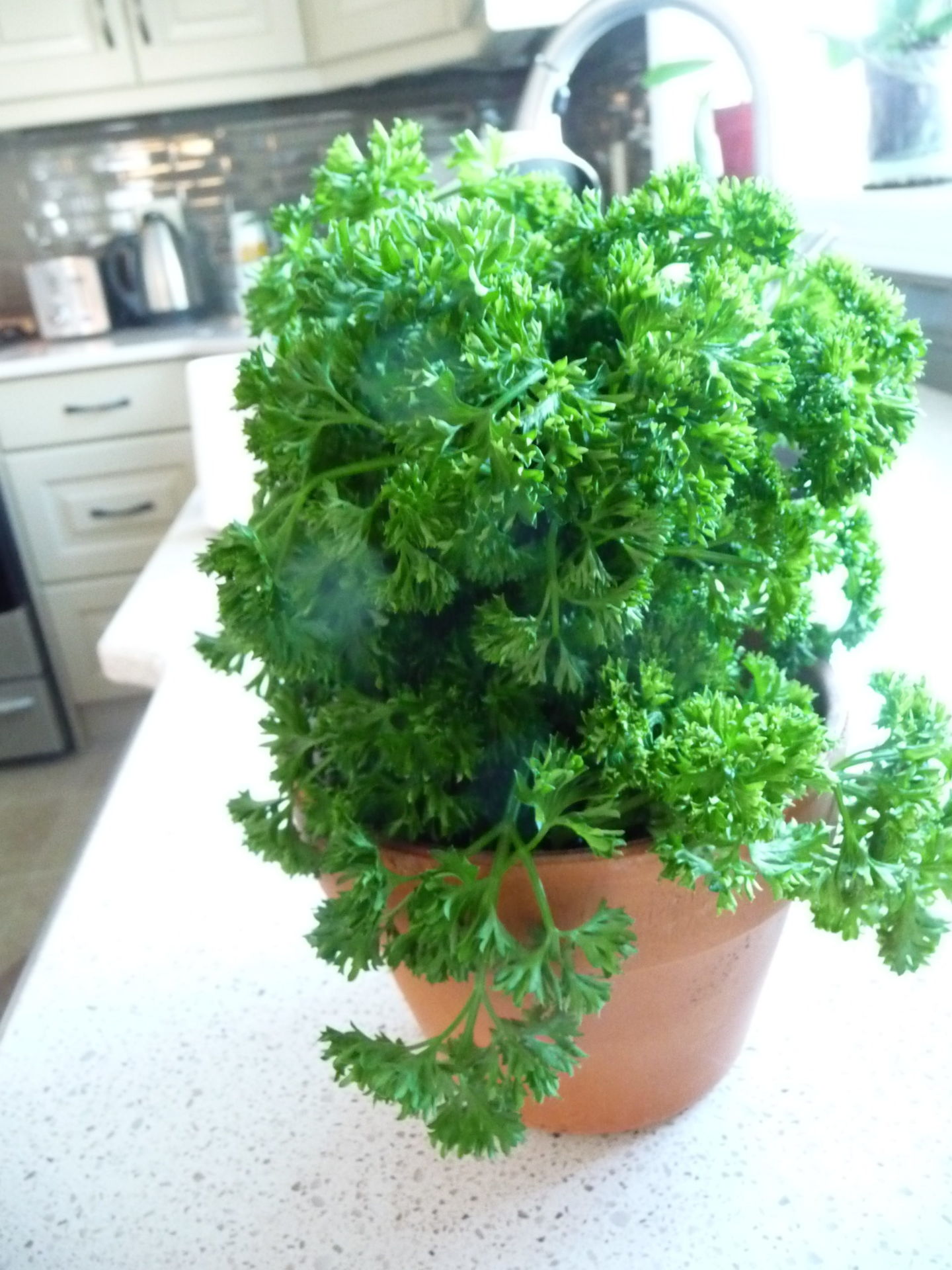Parsley Indoors
Garden Clippings for Feb 23, 2019
If I were to throw my Betty Crocker cookbook against a wall, it would probably fall open on page 54. I don’t make it often, but Lasagne is a perfect winter meal for a crowd. And since lasagne is a fair amount of work to assemble, I usually double the recipe.
It took nearly two hours to make it, with one of those hours spent simmering the sauce. I’ve learned to modify the recipe freely, choosing to add more cottage cheese, more pepper and using fresh parsley instead of the dried flakes from the spice cupboard. I assembled the lasagne on Sunday but didn’t put it in the oven until Monday.
The recipe called for two tablespoons of dried parsley flakes. But since fresh parsley is less potent than dried, I used nearly half a cup so the sauce became more flavourful, and dotted with bright green colour.
Parsley is easy to grow indoors in a normal household environment. Ours sits on the windowsill above the kitchen sink where it gets lots of morning sun. A south or west facing window would be equally effective.
The two common varieties of parsley are curly leaf and Italian with flat leaves. I love the looks of curly leaf parsley with it slightly shorter height. Both are wonderful for cooking spaghetti sauces, although many would suggest the Italian variety is more flavourful with stronger aroma.
A sprig or two of parsley is wonderful as a garnish to cheer up a colourless plate of food.
Plant several parsley seeds together in a 4 to 5 inch diameter pot. Use a good soil-less growing medium and make sure your container has holes to deal with excess water.
Parsley seeds take a long time to germinate, and if you want to speed up the process soak seeds overnight in warm water. Alternatively, put a damp cloth over the seeds to keep them moist longer. If you can, put the pot on the fridge or another spot where it can take advantage of some bottom heat.
Once the seeds have sprouted, usually within three weeks, put the pot on a windowsill or spot where there is lots of light. If warm weather is expected, put the pot outdoors where it can get fresh air.
Keep the soil evenly moist but not soaked. I suggest watering thoroughly allowing the excess water to land in the saucer below where it can be removed. Watering weekly will likely be enough, but if the parsley is full grown it will need more water. Adding a balanced plant food once a month will keep parsley growing actively with fresh green colour.
Parsley is not a strong herb, so using it liberally is just fine. Like kale, fresh parsley is chock full of vitamins. Parsley is a good source of vitamin C, iron, beta carotene and calcium.
Once the weather warms up, plant parsley outdoors in the garden or in containers on the patio. Parsley is the prettiest of herbs and looks wonderful planted in a mixed planter with colourful annual plants.


